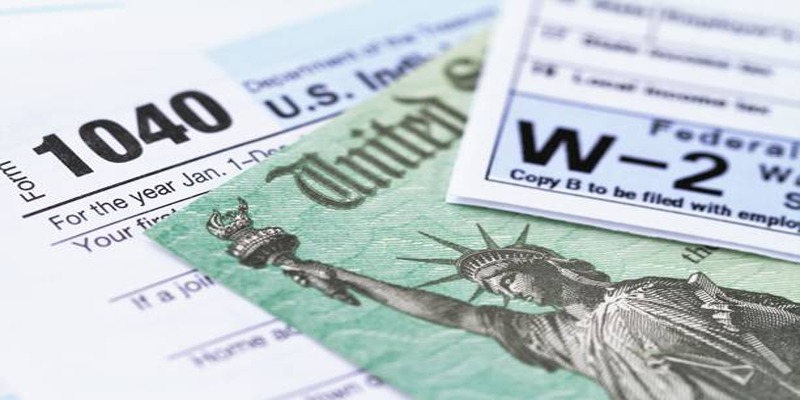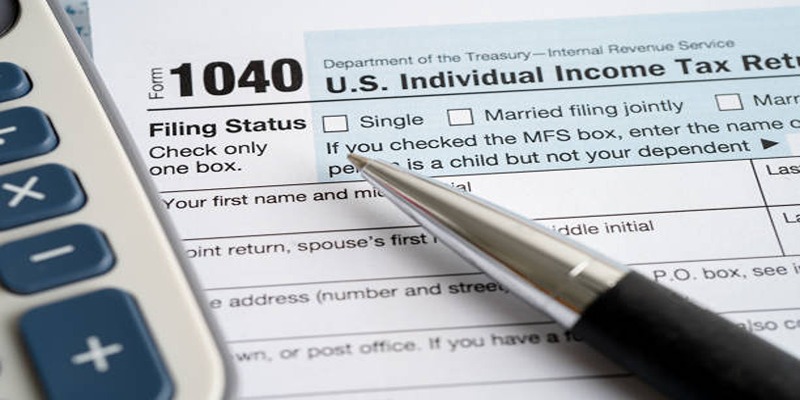Mail Call Madness: Deciphering Common Tax Forms You'll Receive
Mar 23, 2024 By Triston Martin
As the tax season approaches, mailboxes around the country are inundated with various forms and documents that can easily overwhelm even the most organized individuals. The myriad of forms, each with its unique purpose and significance, can create confusion and anxiety about what is required for a thorough and correct tax filing. From the well-known W-2 form, supplied by employers to detail wages and taxes withheld, to the diverse 1099 forms documenting alternative sources of income, understanding the purpose and requirement of each tax form is crucial. This guide aims to demystify the most common tax forms you'll encounter, providing clear explanations and guidance on how to use each one in your tax preparation process, ensuring a smoother and more confident navigation through tax season.
W-2 Form: The Wage and Tax Statement

One of the most familiar tax forms is the W-2, which reports an employee's annual wages and total taxes withheld from their paychecks. It also includes information about any contributions towards retirement plans, such as a 401(k) or IRA. Employers are required to send W-2 forms to their employees by January 31st each year, allowing ample time to file taxes before the April 15th deadline.
Understanding Your W-2 Form
Your W-2 form is divided into several boxes, each providing specific information about your income and taxes paid. Here's a breakdown of what each box means:
- Box 1: This box reports your total taxable wages for federal income tax purposes.
- Box 2: The amount of federal income tax withheld from your paychecks throughout the year is shown in this box.
- Box 3 and 5: These boxes detail your wages subject to Social Security and Medicare taxes, respectively.
- Box 4: Similar to Box 2, this box shows the amount of Social Security tax withheld from your paychecks.
- Box 6: The Medicare tax withheld from your paychecks is reported in this box.
- Box 12: This box includes various codes and amounts for different types of compensation or deductions, such as contributions to a retirement plan or health savings account.
- Box 14: Employers can use this box to report any additional information, such as union dues or educational assistance received.
- Box 16: Your total wages subject to state income tax are reported in this box.
- Box 17: The amount of state income tax withheld from your paychecks is shown here.
Using Your W-2 Form for Tax Preparation
When filing your taxes, you'll need the information provided on your W-2 form to accurately report your income and taxes paid. You can use the amounts listed in Boxes 1, 2, and 17 for federal and state income tax returns. Additionally, any contributions towards a retirement plan or health savings account, as shown in Box 12, may be deductible on your tax return. It's essential to review your W-2 form carefully to ensure accuracy and address any discrepancies with your employer before filing your taxes.
1099 Forms: Supplemental Income Reporting

While the W-2 form is the most common tax form for reporting income, there are also various 1099 forms that report alternative sources of income, such as freelance work or investment earnings. Here are some of the most common types of 1099 forms:
1099-MISC
The 1099-MISC form is used to report income from freelance work, such as consulting or contract work. This form also includes any non-employee compensation received, such as commissions or bonuses.
1099-INT
The 1099-INT form reports interest earned on bank accounts and other investments, such as dividends from stocks or bonds. If you have multiple accounts, you may receive more than one 1099-INT form.
1099-DIV
Similar to the 1099-INT form, the 1099-DIV reports dividends and capital gains earned from investments in stocks and mutual funds.
Using Your 1099 Forms for Tax Preparation
When filing your taxes, any income reported on 1099 forms must be included in your tax return. You may also be able to deduct certain expenses related to this income, but it's crucial to keep thorough records and consult with a tax professional for guidance. It's important to note that you may receive multiple 1099 forms, so make sure to review them all carefully and include them in your tax filing.
Schedule K-1: Partnerships and S Corporations
If you are a partner in a business or a shareholder in an S corporation, you'll receive a Schedule K-1 form that reports your share of the company's profits and losses. This information is then used to report your income and deductions on your personal tax return.
Understanding Your Schedule K-1 Form
The Schedule K-1 form is divided into three parts:
- Part I: This section reports your share of the business's income, deductions, and credits.
- Part II: Any distributions you received from the business during the year are reported in this section.
- Part III: This part provides additional information about your share of the company's operations and any other relevant details.
Using Your Schedule K-1 Form for Tax Preparation
When filing your taxes, you'll need to include the information from your Schedule K-1 form in your personal tax return. Depending on the type of business and the activities involved, this may impact your tax liability. It's essential to review this form carefully and consult with a tax professional if needed to ensure accurate reporting.
Conclusion
Tax forms can seem intimidating, but understanding their purpose and how to use them can make the tax preparation process less daunting. By familiarizing yourself with the most common tax forms, such as the W-2, 1099, and Schedule K-1, you can confidently navigate through tax season and ensure accurate reporting of your income and taxes paid. Remember to review all forms carefully and consult with a tax professional for any questions or concerns. So, start gathering your tax documents early and stay organized to make filing your taxes a smooth process. Happy tax season!

The Finest Coverage Against Hurricanes
As a result of climate change, millions of people who live in hurricane-prone areas are experiencing more frequent and severe hurricanes. One storm in particular caused about $125 billion in damage, and the frequency with which this occurs shows no signs of decreasing. More than 7.1 million homes in the United States are susceptible to hurricane damage, said the Insurance Information Institute.
Oct 02, 2023 Susan Kelly

A Guide About Factors That Affect Mortgage Rates
If you are looking for a mortgage loan, you should shop around to obtain the best interest rate and conditions. It's useful to have an idea of the factors that contribute to the interest rate you'll be charged before you begin the application process. This book includes information that might affect the interest rate you pay on a mortgage loan..
Dec 14, 2023 Susan Kelly

Allstate vs. State Farm: An Overview
State Farm ranks second among the insurance companies in the Best Car Insurance Companies ranking and offers rates that are often significantly lower than the average national. Allstate tends to charge higher rates in comparison to other insurance firms.
Oct 13, 2023 Susan Kelly

Most Common Myths About Financial Advisors
Many myths and misconceptions about financial advisors can make people hesitant to seek professional help. However, by debunking these myths and understanding what financial advisors can do for you, you can make an informed decision about whether or not to work with one. Remember, financial advisors can provide valuable guidance on everything from investing to retirement planning and can help you achieve your financial goals over the long term
Dec 12, 2023 Susan Kelly

The Essential Guide to Withholding Allowances on Your Form W-4
Discover the crucial aspects of managing Form W-4 withholding allowances to optimize your tax situation, avoid penalties, and maximize benefits.
Mar 22, 2024 Susan Kelly

All About the Biggest Banks in the United States
In the United States, banking is an enormous business. So large that as of the beginning of this year, the ten largest US-chartered banks held a combined total of assets of $12.39 trillion. That's the same as their respective nominal GDPs (GDP before inflation is factored in). Since its inception over 20 years ago, JPMorgan Chase has consistently topped the list of the top 10 banks in the United States..
Dec 04, 2023 Triston Martin